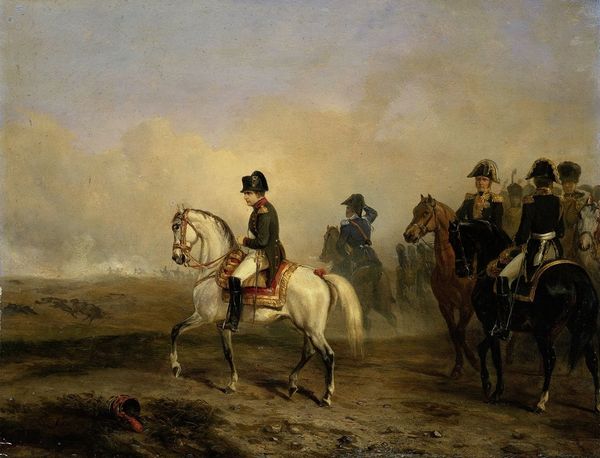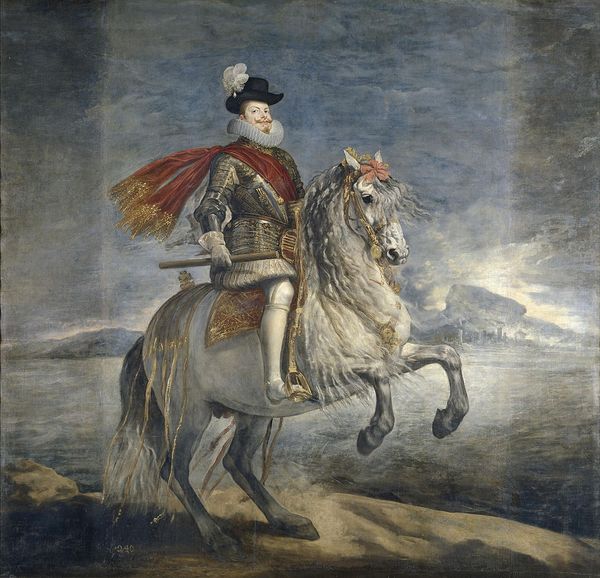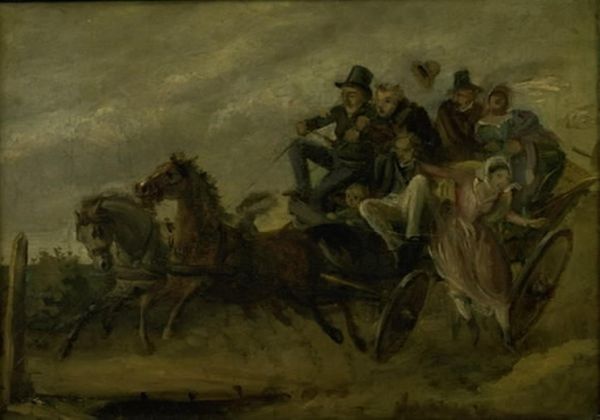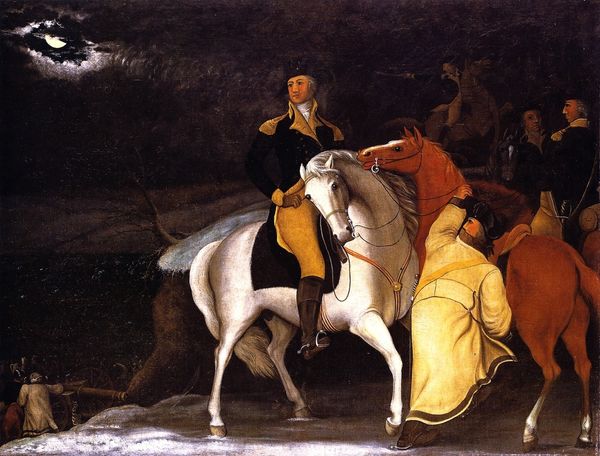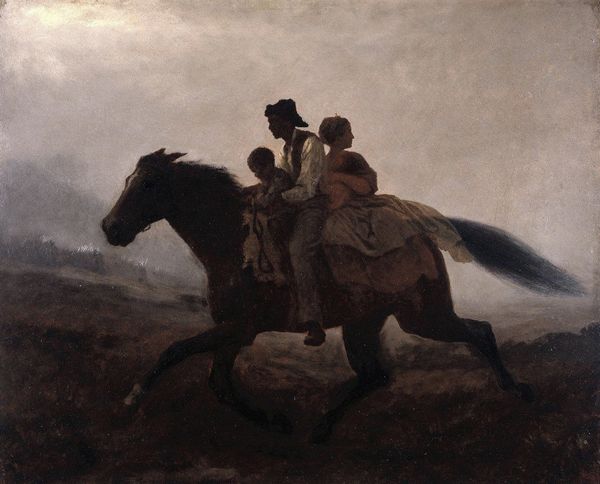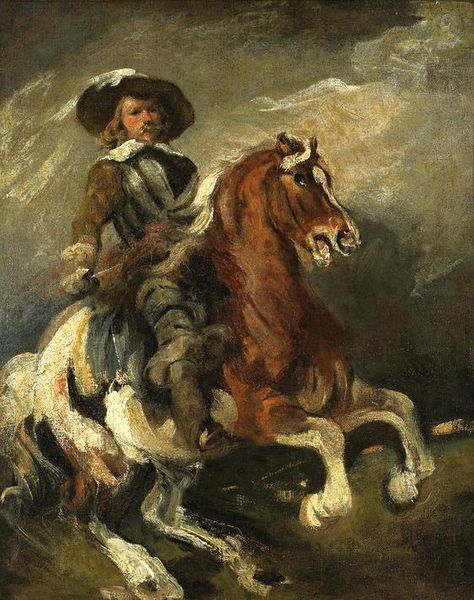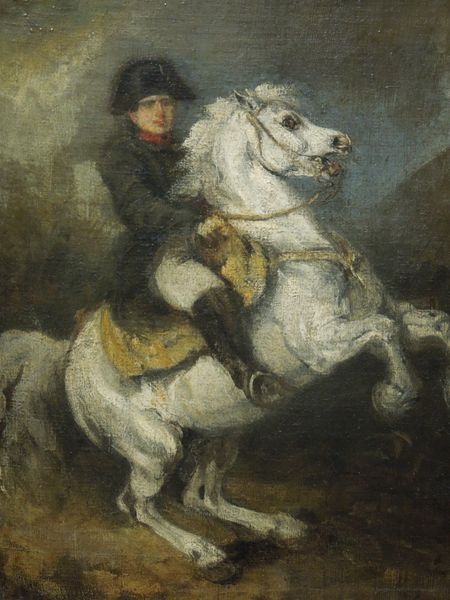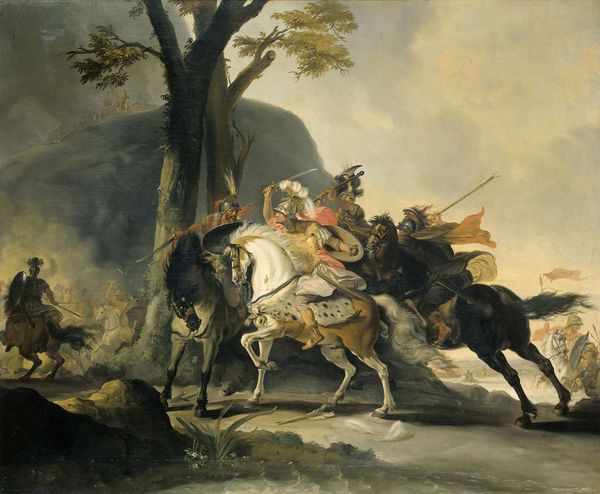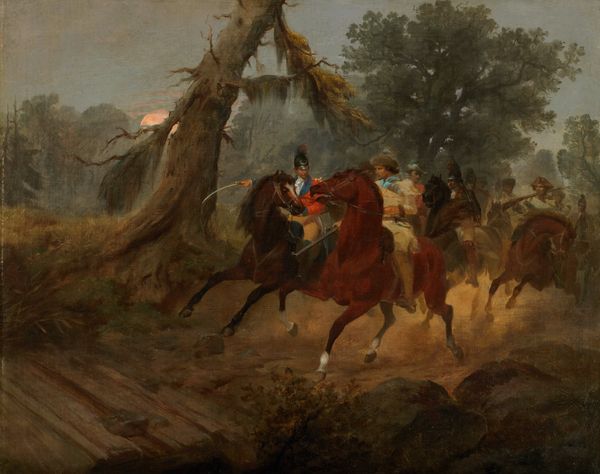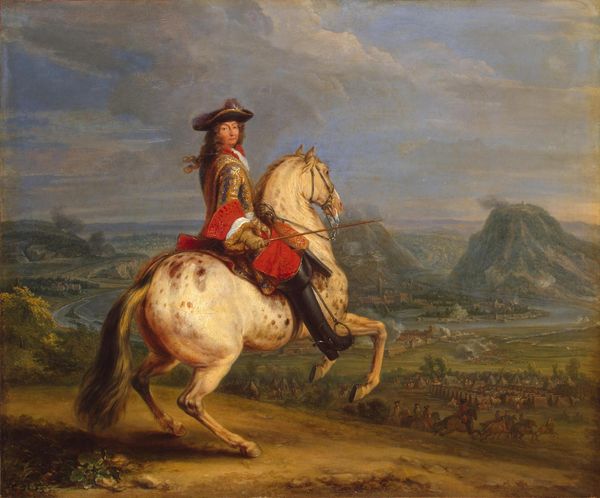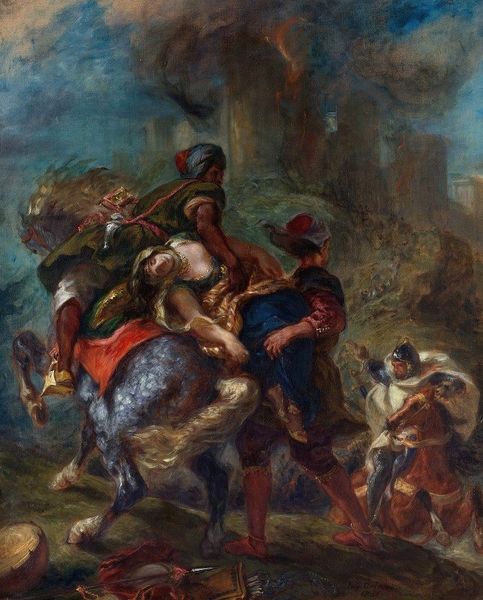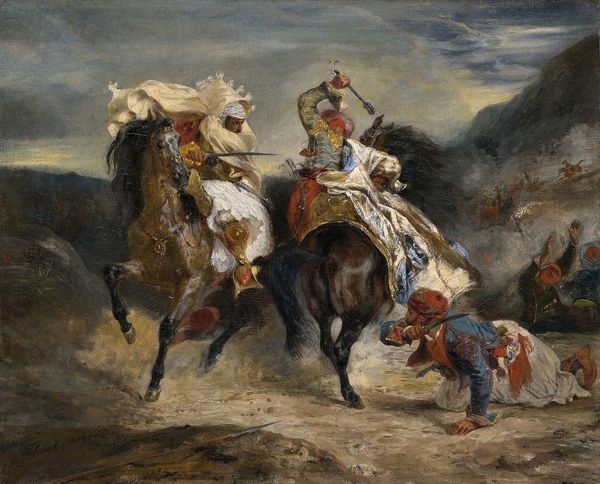
painting, oil-paint
#
portrait
#
figurative
#
painting
#
oil-paint
#
landscape
#
figuration
#
oil painting
#
group-portraits
#
romanticism
#
history-painting
Copyright: Public Domain: Artvee
Editor: Here we have Théodore Géricault’s “Napoléon donnant un ordre à un officier supérieur des Guides,” made with oil paint sometime between 1812 and 1816. I’m struck by the immediacy of it, like a snapshot amidst the chaos. What are your thoughts on this piece? Curator: I find the social context and the materials used most compelling. This piece uses oil paint to portray Napoleon. The means of production – grinding pigments, weaving the canvas, and the artistic labor itself - reflects a hierarchy, and Napoleon as patron and subject becomes an embodiment of the politics around artistic materials. Editor: So, you're saying that even the paint itself is political in some way? How so? Curator: Precisely. Consider who had access to quality pigments at the time, the social implications behind the making and distribution of art supplies, and that making this type of image upheld existing power structures.. Do you see how the act of painting becomes complicit in reinforcing societal norms? Editor: I do now. The type of pigment used, and who controlled access to it…it’s all interwoven. Does this influence how you view the landscape as a backdrop? Curator: Absolutely. Rather than pure aesthetic appreciation, view it through the lens of resource extraction and land ownership – who controls the landscape, its materials, and, by extension, dictates the very scene. Editor: So, it becomes more about control and production than beauty. I never considered how materials can embed so much more meaning into a work like this. Thanks for pointing that out! Curator: My pleasure! Hopefully you’ll see all artwork, from now on, as much more than mere representation but social and political structures.
Comments
No comments
Be the first to comment and join the conversation on the ultimate creative platform.

